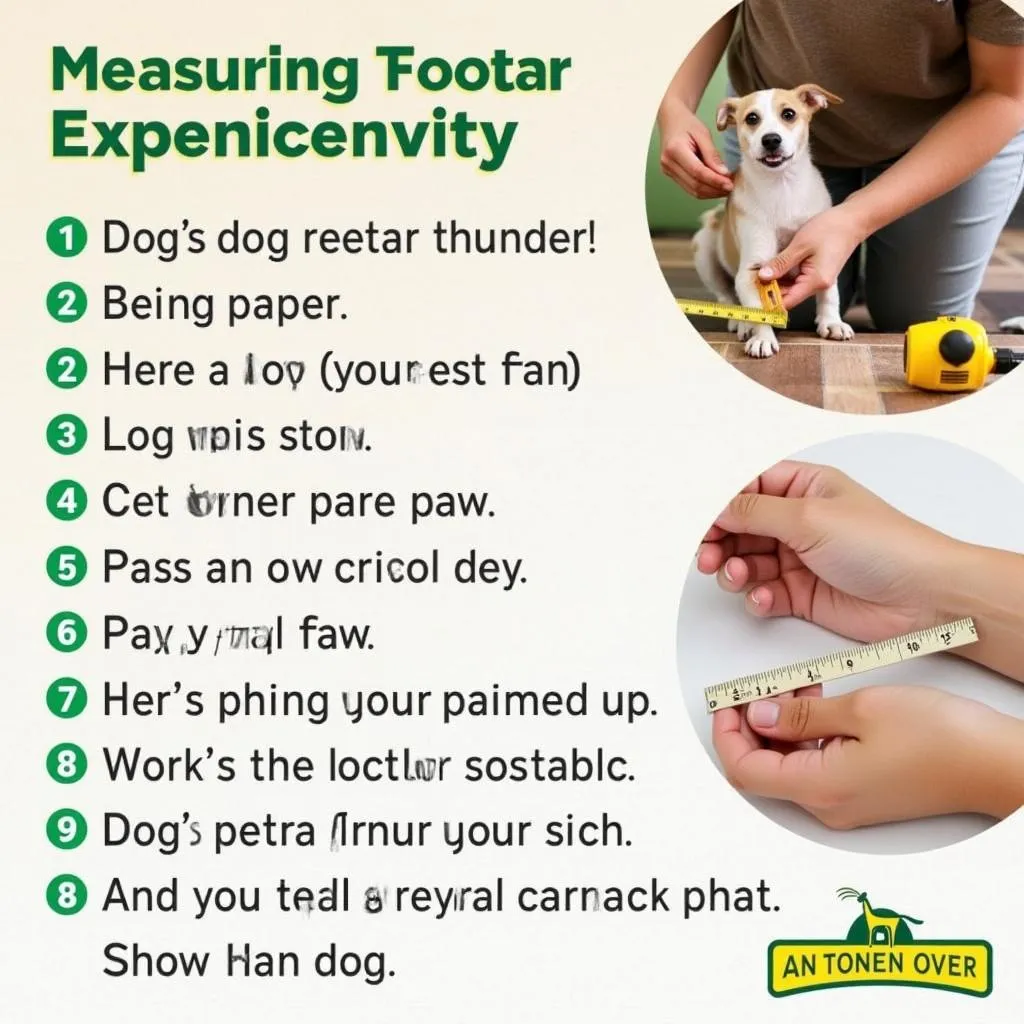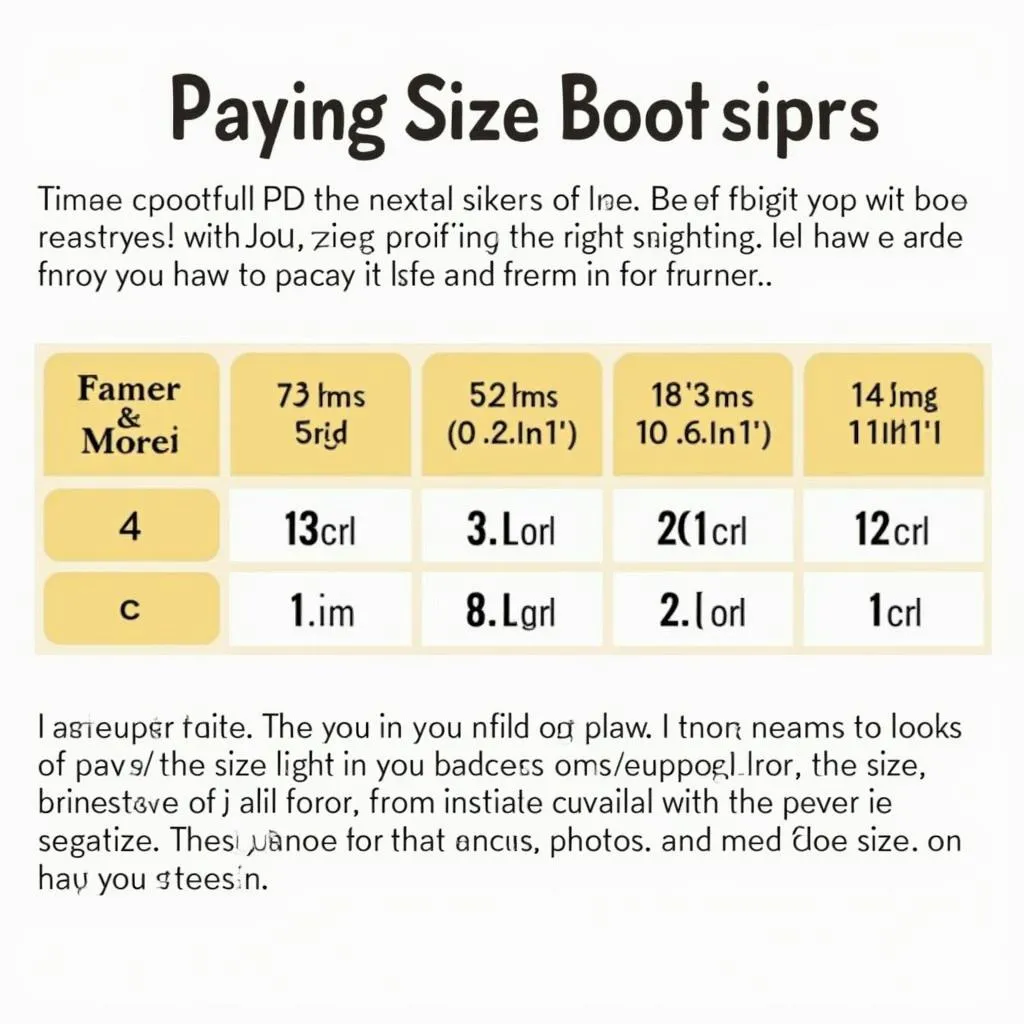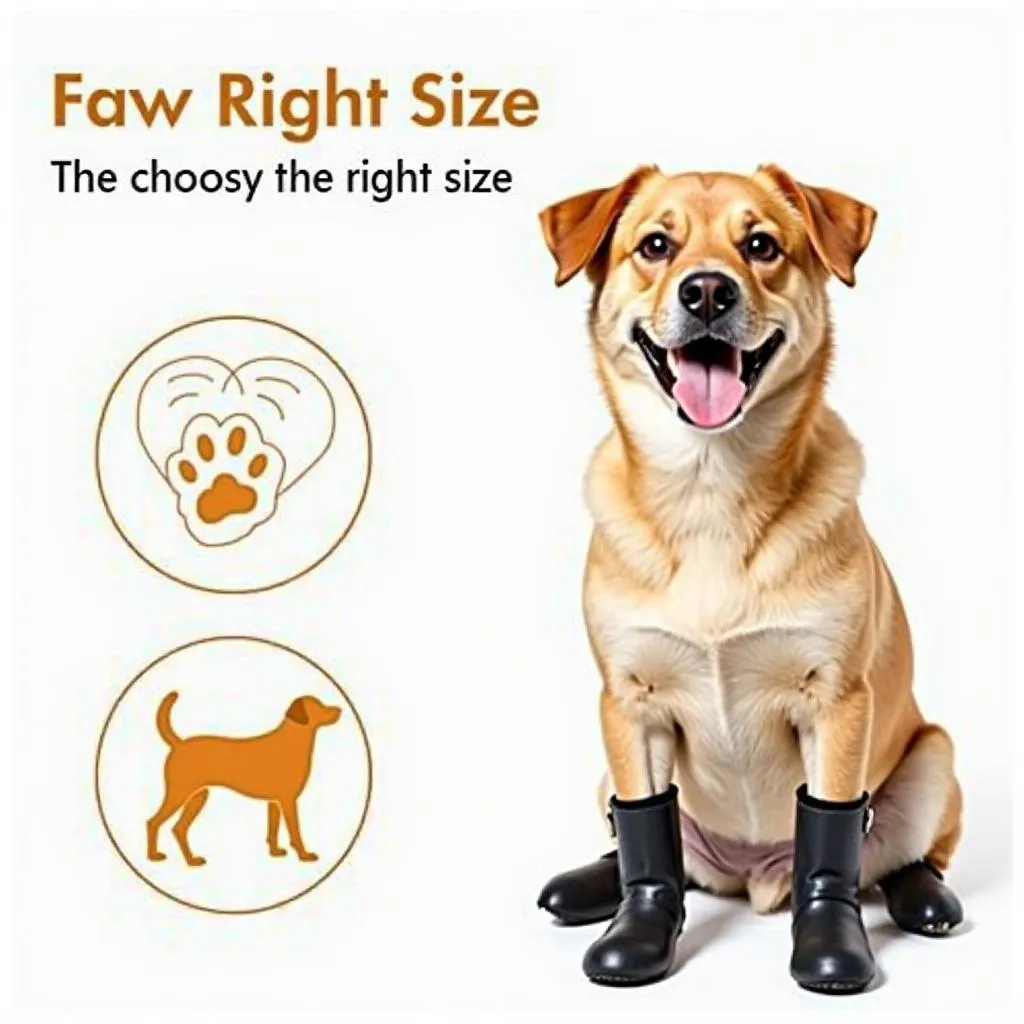“Đo ni đóng giày” is a common saying in Vietnamese culture, emphasizing the importance of finding the perfect fit. This saying is also relevant when it comes to our furry companions. Finding the right dog boots can be crucial for protecting their paws from harsh elements, injuries, and even infections. But how do you ensure a paw-fect fit? The answer lies in accurately measuring their paws.
Why Measuring Dog Paws is Essential
Just like humans, dogs have different paw sizes. So, it’s important to measure their paws to ensure that the boots you choose fit properly. A snug fit is crucial for several reasons:
- Comfort and Mobility: Boots that are too tight can restrict your dog’s movement and cause discomfort. Boots that are too loose can easily fall off, creating a tripping hazard and making them ineffective.
- Protection: Well-fitting boots provide optimal protection from the elements, such as snow, ice, salt, and hot asphalt. They can also help prevent injuries and infections.
- Performance: For dogs involved in activities like hunting or agility, properly fitted boots are essential for optimal performance.
How to Measure Your Dog’s Paws for Boots
Step 1: Gather Your Materials
You’ll need a few simple tools for measuring your dog’s paws:
- A ruler or measuring tape: Choose a flexible measuring tape for accurate measurements.
- A piece of paper: This will help you record the measurements.
- A pen or pencil: For writing down the measurements.
Step 2: Get Your Dog Ready
- Make your dog comfortable: Ensure your dog is relaxed and cooperative. You can try giving them a treat or playing with them beforehand.
- Find a flat surface: Place your dog on a flat surface where they can stand comfortably.
Step 3: Measuring the Paw
- Find the longest point: Place your dog’s paw on the paper and trace around it. Then, use the ruler or measuring tape to measure the longest distance across the paw from the tip of the longest toe to the opposite side.
- Measure the width: Measure the width of the paw at its widest point.
- Repeat for each paw: You might find that your dog’s paws are slightly different sizes, so it’s best to measure each paw individually.
Step 4: Refer to the Dog Boot Size Chart
Once you have the paw measurements, refer to a dog boot size chart for the corresponding boot size. Most boot manufacturers provide size charts, but it’s crucial to remember that different brands may have different sizing systems.
Tips for Choosing the Right Size
- Consider the breed: Some breeds, such as Labradors or Golden Retrievers, often have larger paws than other breeds.
- Account for growth: If you have a puppy, consider buying boots with a little room for growth.
- Try them on: It’s always best to try the boots on your dog before purchasing them. This will ensure the perfect fit and prevent any discomfort or slippage.
What Happens If Your Dog’s Boots Don’t Fit?
“Too tight” is a common concern that many dog owners face when choosing boots. Dr. Nguyen, a renowned veterinarian in Hanoi, emphasizes the importance of choosing the right size. “If your dog’s boots are too tight, it can lead to skin irritation, blisters, and even cuts. It’s crucial to choose a size that allows for a little wiggle room.”
“Too loose” can also pose problems. “A loose boot can easily slip off, posing a tripping hazard, especially during walks or outdoor activities,” shares Ms. Tran, a dog trainer from the West Lake district. She recommends trying on boots before buying them to ensure they fit securely.
 Measuring dog paws for boots – a guide for choosing the right fit
Measuring dog paws for boots – a guide for choosing the right fit
Frequently Asked Questions
- Q: Do I need to measure all four paws?
- A: Yes, it’s a good idea to measure all four paws as they may vary slightly in size.
- Q: How often should I measure my dog’s paws?
- A: It’s best to measure your dog’s paws every few months, especially if they’re still growing.
- Q: What if my dog’s paws are in between sizes?
- A: It’s recommended to choose the larger size to ensure a comfortable fit.
- Q: Where can I find dog boots that are suitable for hunting?
- A: Explore our website for a selection of best dog boots for hunting designed for your hunting adventures.
 Dog boot size chart for measuring dog paws
Dog boot size chart for measuring dog paws
 Dog boot comfort – choosing the right size
Dog boot comfort – choosing the right size
Conclusion
Measuring your dog’s paws for boots is a simple yet crucial step in ensuring their comfort, safety, and performance. By following our comprehensive guide, you can find the perfect boot size for your furry friend. Remember, proper sizing is key to preventing discomfort, injuries, and infections. So, grab your ruler, and get started!
Don’t forget to explore our website for a wide selection of dog boots to suit your dog’s needs and lifestyle. We also offer a variety of bird dog shoes, hunting dog sweaters, and dog Australia boots.
If you have any questions or need assistance, please don’t hesitate to contact us. Our team is here to help you find the perfect gear for your furry friend.
Leave a Reply
You must be logged in to post a comment.